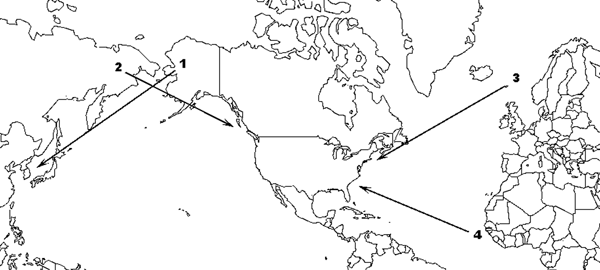Volume 12, Number 10—October 2006
Perspective
Birds and Influenza H5N1 Virus Movement to and within North America
Figure 2

Figure 2. Map of known routes for natural interhemispheric bird movement: route 1, migrants breeding in Alaska and wintering in East Asia; route 2, migrants breeding in East Asia and wintering along the Pacific Coast of North America; route 3, migrants breeding in Iceland or northwestern Europe and wintering along the Atlantic Coast of North America; route 4, vagrants from West Africa carried by tropical storm systems across the Atlantic to eastern North America.
Page created: November 09, 2011
Page updated: November 09, 2011
Page reviewed: November 09, 2011
The conclusions, findings, and opinions expressed by authors contributing to this journal do not necessarily reflect the official position of the U.S. Department of Health and Human Services, the Public Health Service, the Centers for Disease Control and Prevention, or the authors' affiliated institutions. Use of trade names is for identification only and does not imply endorsement by any of the groups named above.